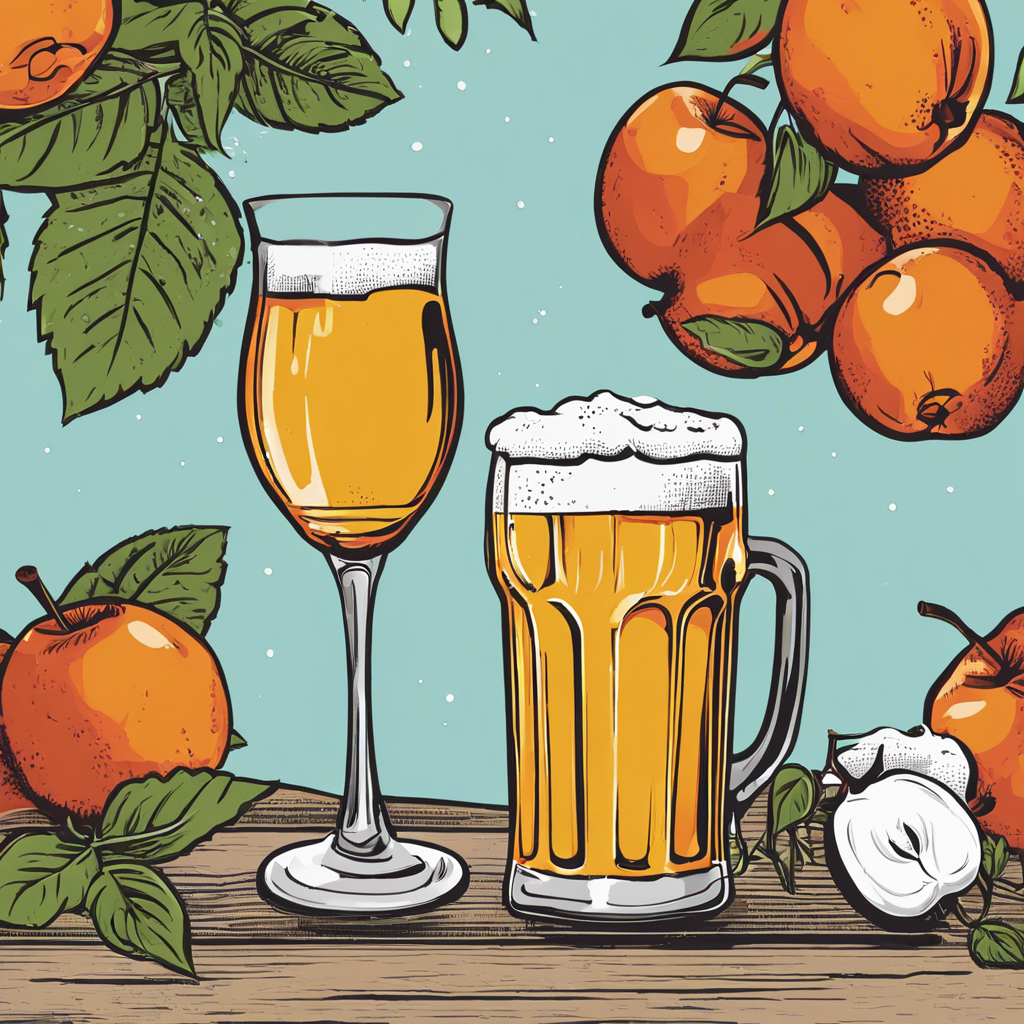## The Bubbly World of Cider and Beer
Hard cider and beer are both beloved beverages with a dedicated global following. They are often enjoyed casually, but do you know what sets them apart? Understanding their distinct characteristics enhances our appreciation of these drinks. So, what exactly is the difference between hard cider and beer?
To start, hard cider is a fermented drink produced from apple juice, imparting a delicate apple flavor. On the other hand, beer is crafted from a mixture of water, barley, yeast, and hops, resulting in a heartier beverage with a broader range of flavor profiles. Beer’s bitterness, for instance, originates from hops, while yeast influences the flavor and alcohol content. Cider, being yeast-free, has a lighter profile.
The alcohol content in hard cider generally falls between 4% and 8%, although stronger varieties exist. Conversely, beer typically contains 5% to 12% alcohol, with some specialty beers reaching even higher levels. This difference in alcohol content is worth noting for those mindful of their consumption. Cider, for instance, might be a preferable option for those seeking a lighter drink.
Cider and beer also differ in their carbonation levels. Hard cider usually has a lighter, more natural carbonation resulting from the fermentation process. Beer, in contrast, often undergoes forced carbonation, creating a more intense fizziness. The difference in carbonation techniques contributes to the unique mouthfeel and texture of each beverage.
Another distinction lies in the level of sweetness. Hard cider often retains a touch of residual sugar, imparting a pleasant sweetness that balances the drink’s acidity. Beer, on the other hand, tends to be drier, with any sweetness derived from the malt rather than residual sugar. This contrast in sweetness contributes to the overall flavor profile and appeal of each drink.
In terms of serving temperature, hard cider is typically served chilled, emphasizing its crisp and refreshing nature. Beer also has its own ideal serving temperatures, which vary depending on the style. Some beers are best enjoyed ice-cold, while others develop richer, more nuanced flavors when served closer to room temperature.
Cider and beer also differ in their food pairing possibilities. Hard cider’s crisp, fruity nature pairs beautifully with savory dishes like pork and rich cheeses. Beer’s versatility in flavor profiles lends itself to a wide array of food pairings, from light, crisp lagers with seafood to robust stouts with decadent desserts.
Lastly, the production process differs significantly between the two drinks. Cider production involves crushing and pressing apples to extract the juice, followed by fermentation. Beer, on the other hand, requires malting barley to convert starches into sugars, mashing to create wort, boiling with hops, and then fermentation. Each beverage demands unique techniques and ingredients.
Whether you’re a cider enthusiast or a beer aficionado, understanding the distinct characteristics of these beloved beverages enhances our appreciation and enjoyment. So, the next time you raise a glass, take a moment to savor the unique qualities that make hard cider and beer so captivating.
